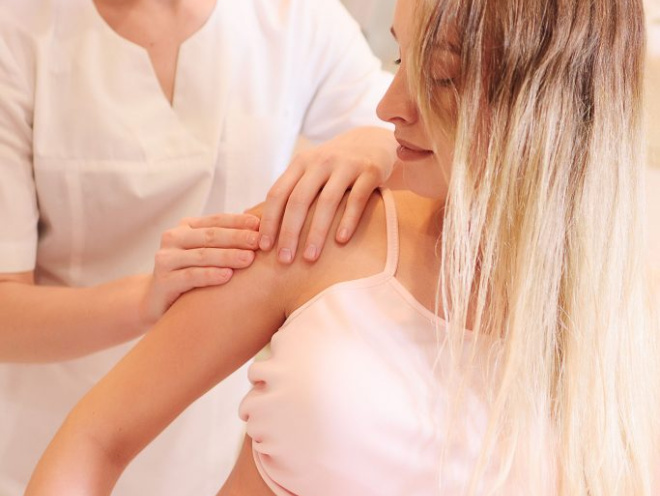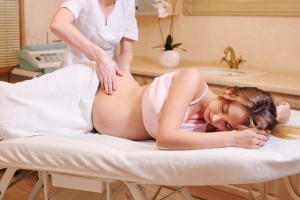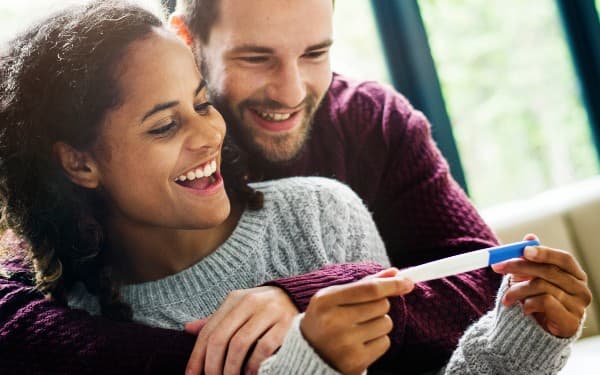What could be nicer than a relaxing beauty treatment when you’re pregnant? We provide the lowdown on treating yourself to spa days, massages and facials when you have a bump.
When you’re growing a baby, you definitely deserve a treat or two. It might be an indulgent bath and a face pack at home, or you may be lucky enough to be going to a spa. Whichever it is, the good news is that you can still have pretty much all of the pampering treatments you had before you were pregnant.
Of course, there are a few things to be mindful of, so here we help you work out what to indulge in and what to avoid. Then all you need to do is relax, unwind and enjoy.
What are the benefits of pampering in pregnancy, like a massage?
Most of us lead busy lives, so it’s great to give yourself time out to unwind and focus on yourself and your growing baby. Plus, if you’re suffering from aches, pains and exhaustion during pregnancy, a soothing treatment can work wonders.
Having a treatment like a massage can help raise your endorphin, oxytocin, serotonin and dopamine levels (Field et al, 2010; Kecskes, 2019). These neurochemicals affect your happiness levels and make you feel good. Massage can also reduce levels of the stress hormone cortisol (Field et al, 2010). And, obviously, feeling happy and de-stressed can only be beneficial for you and your baby (Field et al, 2010).
When in pregnancy is it safe to have a spa treatment?
Some spas advise you not to have treatments during the first trimester. Some might also recommend that you avoid going if you’re beyond 32 weeks pregnant.
You might find that you’re feeling at your best in the second trimester when, hopefully, any pregnancy sickness has receded and you have some energy. So this might be the optimum time for spoiling yourself.
Where can I get spa treatments in pregnancy?
It’s worth looking for a spa that offers treatments specifically for mums-to-be. Of course, these might come at a cost but it should mean the therapists have specific training and experience of dealing with pregnant women.
Also, make sure your therapist knows how many weeks pregnant you are and whether you have any allergies or sensitivities. It’s a good idea to give this information when you book your appointment so they’re prepared.
Always feel free to ask for anything that will make you more comfortable. That might be extra pillows, blankets, towels or water to keep you hydrated.
Are pregnancy massages safe?
A massage can be relaxing, especially if you’re suffering with pregnancy-related aches and pains.
Massage oil safety in pregnancy
Do talk to your therapist about what oils, if any, will be used. This is because there’s thought to be a risk that some essential oils might cause harm by prompting uterine contractions or affecting the baby’s development (Chitty, 2009). So it might be a good idea to err on the side of caution and ask for a massage with a plain oil. Plus, your sense of smell is probably much stronger during pregnancy so a scent-free oil, cream or lotion might suit you better anyway.
Positions for a pregnancy massage
Finding a comfortable position for a massage can be a challenge with a growing bump.
In the third trimester, it’s not recommended that you lie flat on your back for long periods. That’s because the weight of your uterus presses on your spine and major blood vessels. This can decrease blood flow to your baby (Tommy’s, 2019). And, by the third trimester, you’ll probably have a sizeable bump so you’re unlikely to be comfy on your front.
Sitting up, lying on your side or semi-reclining are good options. Some spas have a massage table with a hole cut out to accommodate your bump. More research is required on these as some people are concerned that they allow the abdomen to dangle unsupported. The worry is that gravity is pulling the baby, amniotic fluid and placenta down, and might cause strain on the uterine ligaments.
Cushions or wedges could help you get more comfy. You could also ask your therapist if you need help changing position.
There's no evidence to say that soft, gentle massaging of your bump itself is harmful. But you might find that your tummy or your breasts feel more sensitive and so you’d rather your therapist avoids these areas.
If you find any techniques particularly relaxing during your massage, make a mental note and show your partner. These massage techniques may come in handy for your partner to use during labour.
Can I have a facial if I'm pregnant?
Some lucky women find they have a lovely glow in pregnancy, while others find their skin is oily, dry or prone to spots. All of this is thanks to those pregnancy hormones. Whatever is going on with your skin, a facial might be a nice way to help you feel and look rejuvenated.
If you’re finding your skin is more sensitive, ask your therapist to use gentler products. You can also ask for a patch test 24 hours before your treatment.
Retinoids
You could try to double check that any products used are safe for pregnancy. In particular you may wish to avoid anything containing retinoids. This is a type of vitamin A sometimes used in skincare because it boosts the skin’s renewal by speeding up cell division.
Oral retinoids are known to cause birth defects. While retinoids applied to skin haven’t been shown to cause problems in pregnant women, doctors are being extra cautious in recommending you avoid them (Browne et al, 2014).
What spa treatments should I avoid in pregnancy?
If you’re on a spa day, then try to stay away from saunas, steam rooms, hot tubs, Jacuzzis and heated body wraps. These aren’t recommended at any stage during pregnancy because of the risk of overheating (Chambers, 2006).
If you’re unsure whether something is safe you can always ask staff. Just check that the temperature is no higher than 35°C, or 32°C if you're exercising in the water.
If you’re going for a dip in the pool, be careful getting in and out as your balance might not be as good now you have a bump. You might also want to watch out for slippery surfaces around the pool.
How can I have a pregnancy spa and facial at home?
A spa day or treatment can cost a lot of money so why not recreate some of the luxury at home. If you have older children, you could try to get them to bed early and give yourself a lovely home spa experience.
Home spa: 9 tips to help you relax
Here are some simple tips to help you feel relaxed, pampered and to create that special spa ambience in the comfort of your own home:
- Draw the curtains, dim the lights, put some relaxing music on and light a scented candle.
- Warming your flannels or towels on a radiator and using a fluffy dressing gown will make your home spa feel extra special.
- Get yourself comfy, have a nap or try some deep breathing or yoga moves to help you relax.
- Find your fanciest bubble bath and run yourself a big, indulgent-smelling bath.
- Chill out with a mug of your favourite herbal tea and a magazine while the bath fills, then step into the bath for a long, luxurious soak.
- You could try out a face pack or salt scrub on your body.
- For that super smooth spa feeling, you could use an intensive conditioner on your hair and moisturise your skin all over with a body butter.
- Create your own eye mask using cucumber slices or cotton wool pads soaked in chamomile tea and left to cool.
- If you have a partner, why not persuade them that you desperately need a foot massage, and if not, you could give yourself a DIY reflexology foot massage.
Remember, your body is going through a huge amount right now. And you may well be experiencing one or two of the not so pleasant discomforts of pregnancy. So, if a treatment or two helps you rest, relax, rejuvenate and relieve stress, then go for it and enjoy.
This page was last reviewed in October 2018.
Further information
Our support line offers practical and emotional support with feeding your baby and general enquiries for parents, members and volunteers: 0300 330 0700.
We also offer antenatal courses which are a great way to find out more about birth, labour and life with a new baby.
Make friends with other parents-to-be and new parents in your local area for support and friendship by seeing what NCT activities are happening nearby.
Browne H, Mason G, Tang T. (2014) Retinoids and pregnancy: an update. The Obstetrician & Gynaecologist. 16(1):7-11. Available from: https://obgyn.onlinelibrary.wiley.com/doi/full/10.1111/tog.12075 [Accessed 28th March 2019]
Chambers CD. (2006) Risks of hyperthermia associated with hot tub or spa use by pregnant women. Birth Defects Res A Clin Mol Teratol. Available from: 76(8):569-73. https://www.ncbi.nlm.nih.gov/pubmed/16998815 [Accessed 28th March 2019]
Chitty A. (2009) Review of evidence: complementary therapies in pregnancy. Available from: https://www.nct.org.uk/sites/default/files/related_documents/New%20Dige…; [Accessed 28th March 2019]
Field T, Diego M, Hernandez-Reif M. (2010) Prenatal depression effects and interventions: a review. Infant Behav Dev. 33(4):409-418. Available from: https://www.ncbi.nlm.nih.gov/pmc/articles/PMC2933409/ [Accessed 28th March 2019]
Kecskes AA. (2019) Neurohormonal effects of massage therapy. Available from: https://www.pacificcollege.edu/news/blog/2014/11/08/neurohormonal-effects-massage-therapy-1 [Accessed 28th March 2019]






